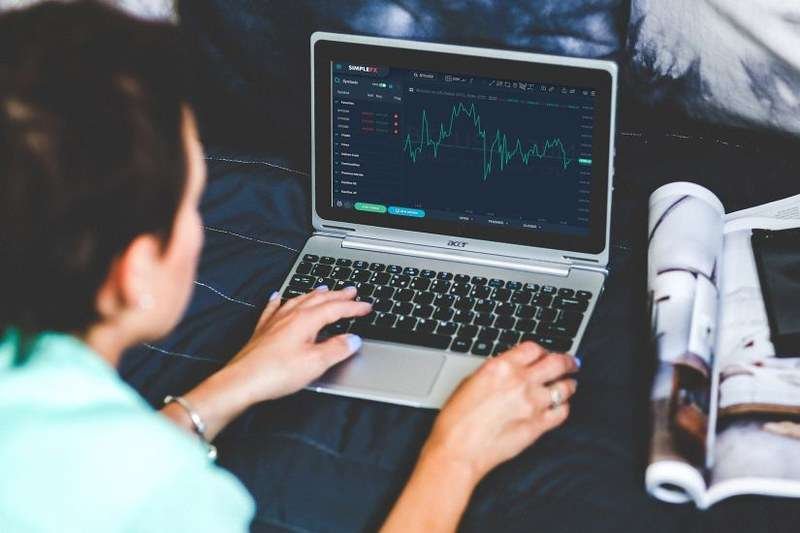Although it might appear utopian to many, thousands of traders are living this fantasy. However, how do you get there, and more importantly, what is the minimum capital needed to start trading forex? We can then discuss the potential of making your trading skills an income for a living if we at least cover some basics about what you require.

Understanding Forex Trading Basics:
Foreign exchange trading, or forex trading for short, refers to the act of buying and selling world currencies. It is the world’s largest and most liquid financial market, where participants include banks, institutions of finance such as central banks, investment managers.
In forex trading, currencies are traded in pips, for instance, the Euro/US Dollar (EUR/USD). The idea is to purchase one currency while short selling another. A forex pair is the cost of one unit in base price currency as converted to quote currency.
Traders perform their transactions on platforms offered by brokers who provide analytical tools. So that they can generate forecasts and implement trade executions.
One of the common attributes of forex trading is leverage, which allows traders to manipulate large positions with very little capital invested. However, this also implies that both potential profits and losses are amplified.
Various forms of analysis are used by traders to base their decisions. Fundamental analysis analyzes economic indicators and government policies to forecast currency movements.
In contrast, technical analysis typically involves using historical price charts and market statistics to identify trends. Sentiment analysis is an attempt to determine the spirit or mood of market practitioners.
The forex market is also controlled by the bid and ask prices. A bid price is the only amount a trader can sell a currency for, and an ask price is what they might purchase it for.
The gap between these prices is referred to as the spread. The difference between the price at which a currency pair was bought and sold. Along with trade costs such as spreads and commissions, will represent profits or losses in forex trading.
Factors Influencing Initial Investment:
By trading the forex markets, it is necessary to have great skills, patience. The ability to learn from your mistakes faster than other people. Yes, even professional traders sometimes make mistakes.
Trading forex is appealing because you obtain leverage that allows for trading with relatively little capital. At Axi, you can potentially access leverage of 100:1 according to the country you are trading in. So, $100 can influence transactions worth more than $1 million.
However, it is not the level of leverage that you would like to be trading at. In this article, we’ll discuss some reasonable risk reduction tactics to help you reduce your risks in the face of wild equity price oscillations.
Starting out, your objective is to develop and implement trading strategies that allow you to position sizing large enough for meaningful cash flow from your skill mastery.
The best feature of trading with Axi is the ability to trade micro-position sizes. A micro position of $1,00 will give you an opportunity to experiment on small positions. Like if one loses ten trades consecutively, the account will be left intact.
Practical Considerations and Strategies:
Is it possible to trade forex with $100?
You can. Nevertheless, your choices will be restricted, and unless you trade carelessly, your returns will be severely capped.
Although a 2% return from a single trade may seem like an excellent outcome, it will be less inspiring once you learn that such results resulted in just a $2 gain.
Though it is a nice way to trade without risking much of your real funds, there still remains the danger that, unless you are already a disciplined trader. You will end up taking more than half and trying to maximize those dollar returns.
Of course, the answer to this is not to add more money if you are not ready or cannot afford to lose it. Alternatively, you can go back to your demo account and run your strategy there until you’re confident enough to.
Money you need to start trading:
The required amount to trade forex is dependent on a number of variables, including your style of trading, available funds and many more.
Nevertheless, you should never risk more than what you’re willing to lose. Investing in financial markets presents a high danger of losing your funds, and you do not want to risk all the money you have been saving throughout life on trading.
Your trading style also influences the amount of Forex starting capital you need. Basically, scalping requires a relatively small amount of initial cash input in comparison to swing or position trading.
The reason for this is the relatively small size of Stop Loss levels in scalping, which provide you with enough free margin even when the trade goes against you.
Having a larger account size is always an easier way to avoid margin calls and have enough free margin. Some brokers can have accounts with a minimum deposit as low as $10, others may require hundreds or thousands of dollars to open an account.
The minimum amount required is not constant; it depends on other factors like the trading style used, broker requirements, and personal preferences. While some brokers can have accounts with a minimum deposit as low as $10, others may require hundreds or thousands of dollars to open an account. Leverage enables traders to manage more significant positions with a lower amount of capital. It amplifies potential profits but also increases the probability of major losses. It is very important to know and use leverage wisely. The effect of losses can be exaggerated when trading on a small account, and due to margin constraints, the number of open trades will have to be reduced. Risk management should be effective at mitigating these risks. It is recommended that one first practice on a demo account before trading for real money. Proper position sizing, setting stop-loss orders, diversifying trades, and avoiding overleveraging enable traders to manage risks effectively. Moreover, one should concentrate on high-likelihood trades and be disciplined in their approach. Some of the common errors made are overtrading, failure to attend to risk management, loss-chasing, and trading without a definite strategy. A clear trading plan must be developed and followed religiously. FAQs
How much is the minimum required to trade forex?
What impact does leverage have on trading capital needs?
What are the hazards of trading on a small account?
How can traders manage risk with little capital?
What are the common mistakes to be avoided when begin with a small account?





